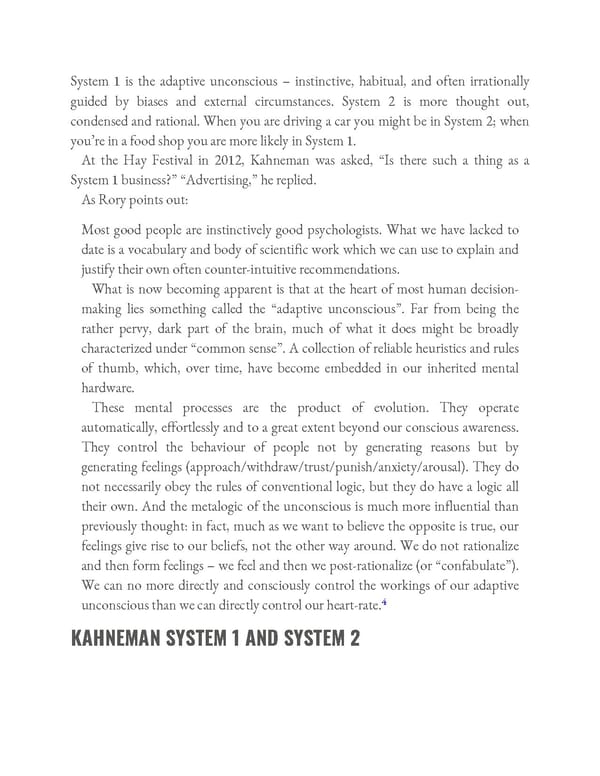System 1 is the adaptive unconscious – instinctive, habitual, and often irrationally guided by biases and external circumstances. System 2 is more thought out, condensed and rational. When you are driving a car you might be in System 2; when you’re in a food shop you are more likely in System 1. At the Hay Festival in 2012, Kahneman was asked, “Is there such a thing as a System 1 business?” “Advertising,” he replied. As Rory points out: Most good people are instinctively good psychologists. What we have lacked to date is a vocabulary and body of scientific work which we can use to explain and justify their own often counter-intuitive recommendations. What is now becoming apparent is that at the heart of most human decision- making lies something called the “adaptive unconscious”. Far from being the rather pervy, dark part of the brain, much of what it does might be broadly characterized under “common sense”. A collection of reliable heuristics and rules of thumb, which, over time, have become embedded in our inherited mental hardware. These mental processes are the product of evolution. They operate automatically, effortlessly and to a great extent beyond our conscious awareness. They control the behaviour of people not by generating reasons but by generating feelings (approach/withdraw/trust/punish/anxiety/arousal). They do not necessarily obey the rules of conventional logic, but they do have a logic all their own. And the metalogic of the unconscious is much more influential than previously thought: in fact, much as we want to believe the opposite is true, our feelings give rise to our beliefs, not the other way around. We do not rationalize and then form feelings – we feel and then we post-rationalize (or “confabulate”). We can no more directly and consciously control the workings of our adaptive 4 unconscious than we can directly control our heart-rate. KAHNEMAN SYSTEM 1 AND SYSTEM 2
 Ogilvy on Advertising in the Digital Age Page 401 Page 403
Ogilvy on Advertising in the Digital Age Page 401 Page 403